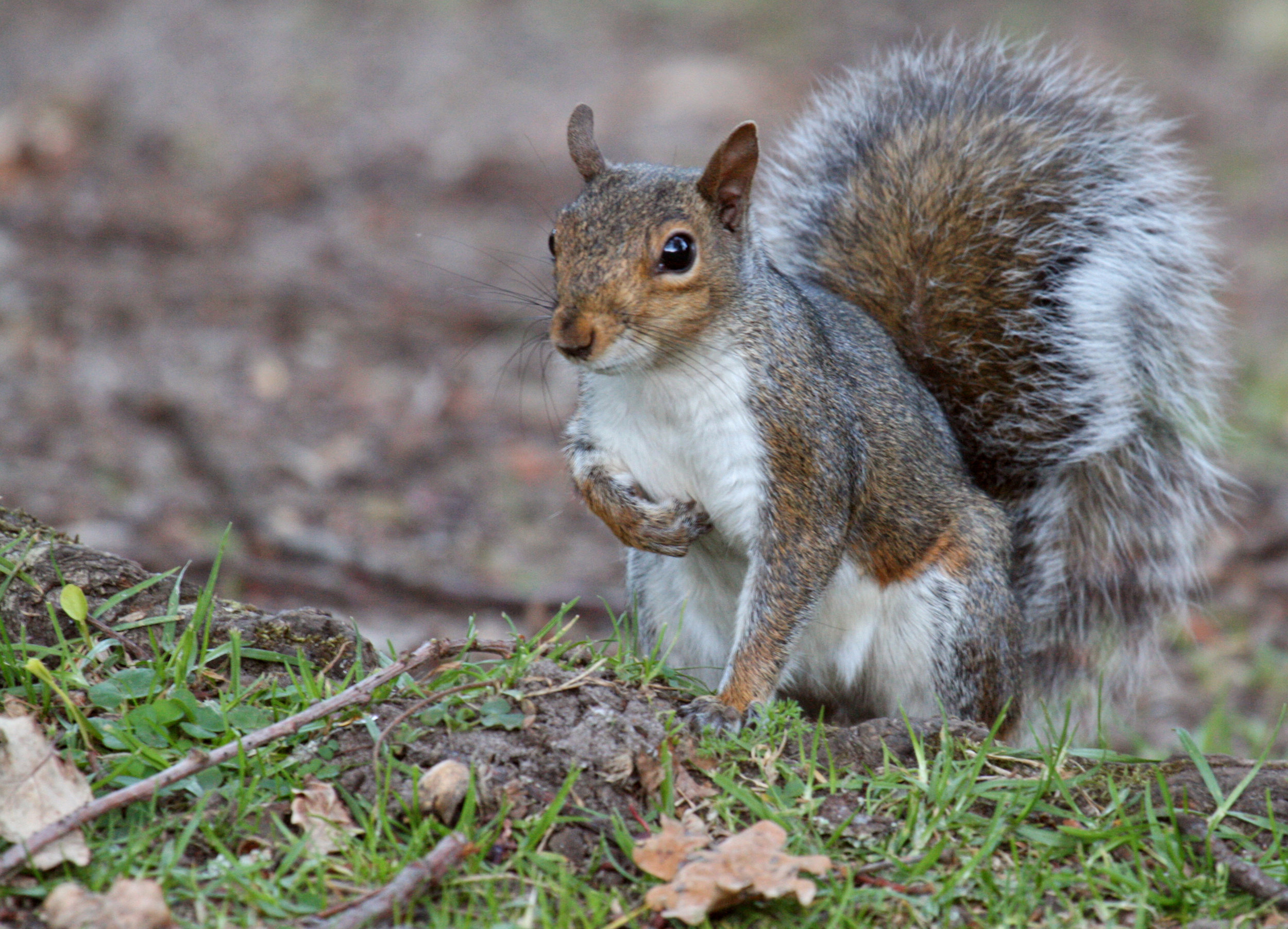Eastern Gray Squirrel
Sciurus carolinensis, common name eastern gray squirrel or grey squirrel depending on region, is a tree squirrel in the genus Sciurus. It is native to eastern North America, where it is the most prodigious and ecologically essential natural forest regenerator. The eastern grey squirrel in Europe is regarded as an invasive species.
Sciurus carolinensis is native to the eastern and midwestern United States, and to the southerly portions of the eastern provinces of Canada. The native range of the eastern gray squirrel overlaps with that of the fox squirrel (Sciurus niger), with which it is sometimes confused, although the core of the fox squirrel's range is slightly more to the west. The eastern gray squirrel is found from New Brunswick to Manitoba, south to East Texas and Florida. Breeding eastern gray squirrels are found in Nova Scotia, but whether this population was introduced or came from natural range expansion is not known. It has also been introduced into Ireland, Britain, Italy, South Africa, and Australia (where it was extirpated by 1973). Eastern grey squirrels in Europe are a concern because they have displaced some of the native squirrels there. This squirrel has also been introduced to Vancouver Island in Western Canada in 1966 in the area of Metchosin and has spread widely from there. The squirrels are considered highly invasive and a threat to both the local ecosystem and the native red squirrel.
A prolific and adaptable species, the eastern gray squirrel has been introduced to, and thrives in, several regions of the western United States. The gray squirrel is an invasive species in Britain; it has spread across the country and has largely displaced the native red squirrel, S. vulgaris. In Ireland, the red squirrel has been displaced in several eastern counties, though it still remains common in the south and west of the country. That such displacement might happen in Italy is of concern, and gray squirrels might spread from Italy to other parts of mainland Europe.
The eastern gray squirrel has predominantly gray fur, but it can have a brownish color. It has a usual white underside as compared to the typical brownish-orange underside of the fox squirrel. It has a large bushy tail. Particularly in urban situations where the risk of predation is reduced, both white – and black-colored individuals are quite often found. The melanistic form, which is almost entirely black, is predominant in certain populations and in certain geographic areas, such as in large parts of southeastern Canada. Genetic variations within these include individuals with black tails and black-colored squirrels with white tails.
The head and body length is from 9.1 to 11.8 in, the tail from 7.5 to 9.8 in, and the adult weight varies between 14 and 21 oz. They do not display sexual dimorphism, meaning there is no gender difference in size or coloration.
The tracks of an eastern gray squirrel are difficult to distinguish from the related fox squirrel and Abert's squirrel, though the latter's range is almost entirely different from the gray's. Like all squirrels, the eastern gray shows four toes on the front feet and five on the hind feet. The hind foot-pad is often not visible in the track. When bounding or moving at speed, the front foot tracks will be behind the hind foot tracks. The bounding stride can be two to three feet long.

By Wildlife Wanderer. CC BY-NC-ND 2.0, via Flickr

